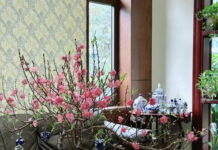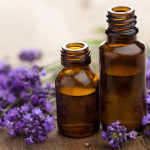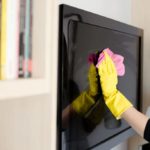Causes of Green Soaked Garlic
Soaked garlic vinegar is a familiar and easy-to-make dish, but many jars of soaked garlic turn green the next day, which is very unappetizing.
The reason garlic turns green is due to oxidation. It is mainly due to young garlic and garlic sap, so when it comes into contact with air and vinegar, it undergoes oxidation and turns green. Therefore, when making soaked garlic vinegar, it is necessary to know how to prepare and handle it in order to overcome this situation.
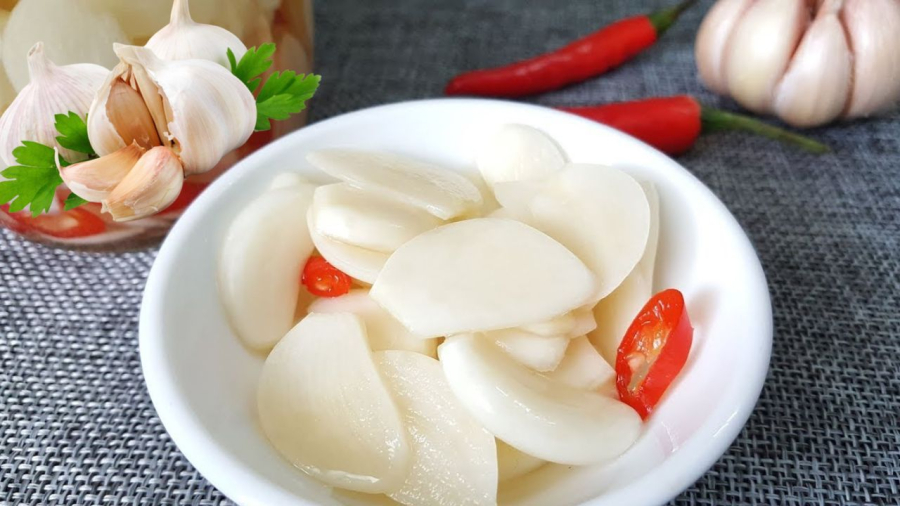
Garlic turns green due to young garlic or insufficiently washed garlic sap
Preparing Ingredients for Chili Vinegar Soaked Garlic
Choose 200g of garlic or more depending on the number of family members and the amount you want to soak. To make the soaked garlic crispy and white, choose old and firm garlic bulbs. Small garlic cloves taste better than large ones, but they take longer to peel and process. Garlic with purple skin tastes better than garlic with white skin, and one-bulb garlic tastes better than multi-bulb garlic.
Use 500ml of vinegar or increase according to the proportion of garlic. There are many types of vinegar available on the market. You should choose high-quality vinegar that is not dark and has a fresh taste. Cheap vinegar is dark and tastes bad.
Fresh chili peppers
Salt
Water
Glass jars or ceramic jars. Avoid soaking garlic in plastic jars as they will react poorly.
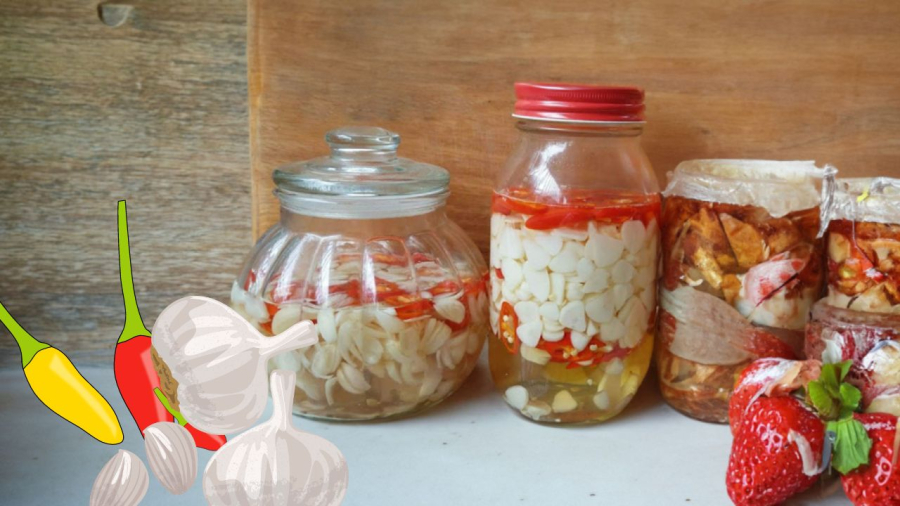
Proper preparation of garlic will make the soaked garlic crispy and white, without turning green
Preparing Garlic to Prevent It from Turning Green
In addition to choosing good quality garlic, preparing the garlic properly is also important to avoid it turning green.
Peel and slice the garlic cloves to a moderate thickness. Rinse the garlic thoroughly and soak it in diluted saltwater with a little sugar for about 30 minutes. Then drain the water and soak the garlic again to prevent it from turning green. Soaking and rinsing the garlic several times helps reduce the garlic sap and prevents it from turning green. You can soak it 2-3 times in saltwater to make the garlic vinegar soaked garlic stay green.
To sterilize the garlic and prevent it from becoming discolored during soaking, you can quickly blanch the garlic in boiling water and then let it drain.
Rinse the chili peppers thoroughly and remove the seeds before slicing. The amount of chili peppers depends on your family’s preference for spiciness. You can add or omit chili peppers based on your family’s preferences.
Add vinegar and water to a pot and add a little sugar. Cook until boiling and the sugar is dissolved. You can skip this step, but boiling will remove the dark odor of vinegar and prevent the formation of scum during soaking. Adding sugar will make the vinegar water clearer and more palatable. You can completely skip adding water and just use 100% vinegar with sugar.
Soaking the Garlic in Vinegar:
After the garlic has drained, place it in a glass jar. Make sure to rinse the glass jar with boiling water and let it drain. Place the garlic and chili peppers in the glass jar.
When the vinegar solution has completely cooled, pour it into the jar with the garlic and chili peppers. Cover with a lid and store in a cool place. It can be ready to eat in 2-3 days. Avoid storing the jar of garlic vinegar in a hot place or in direct sunlight, as this will cause them to become sour quickly and the garlic will not be crispy.
When serving, use a clean spoon to scoop out the garlic vinegar to avoid creating bubbles by using the spoon you are eating with.









